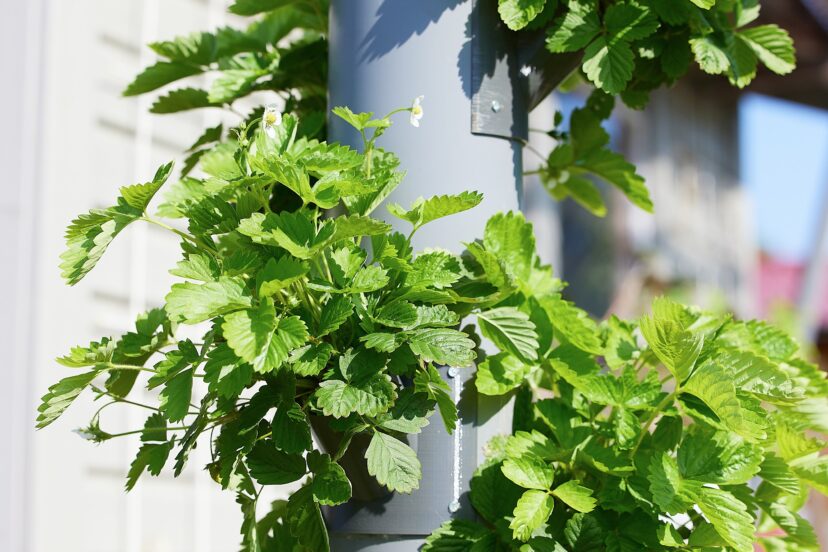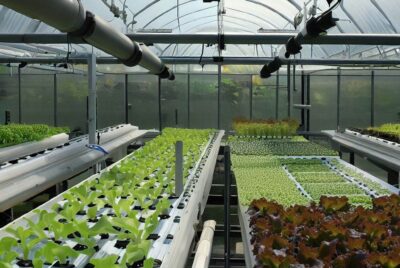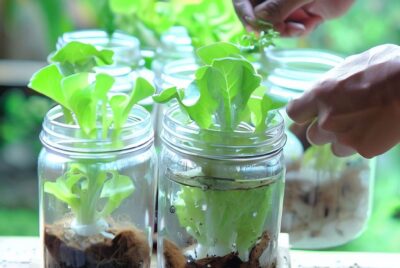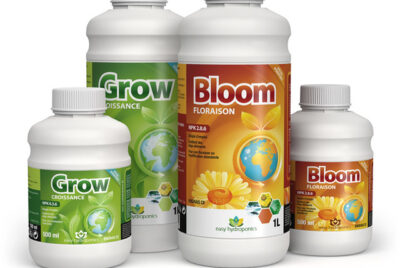Vertical Hydroponic Garden – Overview to Get Started
*We may earn a commission for purchases made using our links. Please see our disclosure to learn more.
I am thrilled to share with you the wonders of getting started with a vertical hydroponic garden. One of the reasons why I love hydroponic gardening is because it eliminates the need for soil, opening up a world of possibilities for growing plants. Whether you have limited space or a small urban setting, vertical hydroponics allows you to cultivate a thriving garden in a compact area. In this guide, we will explore the concept of vertical hydroponics, its incredible benefits, and the essential steps to set up your own flourishing vertical hydroponic garden. Let’s dive in and discover the excitement of soil-less gardening!
What is a Vertical Hydroponic Garden?
A vertical hydroponic garden is a system that allows plants to be grown vertically instead of horizontally. It utilizes vertical space efficiently, making it an excellent choice for urban areas or limited gardening spaces. In this innovative gardening method, plants are grown in stacked layers or towers, allowing for maximum utilization of available space.
Benefits of Vertical Hydroponics
Vertical hydroponic gardening offers numerous benefits that make it an attractive option for both experienced gardeners and beginners alike. Here are some advantages to consider:
- Maximizing space: Vertical gardens utilize vertical surfaces, enabling you to grow a larger number of plants in a smaller area.
- Higher yields: The vertical arrangement provides optimal exposure to light and nutrient distribution, resulting in increased productivity and higher crop yields.
- Improved air circulation: The vertical structure allows for better air movement, reducing the risk of fungal diseases and promoting healthier plants.
- Water efficiency: Vertical hydroponic systems often employ recirculating water systems, minimizing water waste compared to traditional soil gardening.
- Aesthetic appeal: Vertical gardens can transform bare walls or unused spaces into stunning greenery, adding beauty and a touch of nature to your surroundings.
Setting up a Vertical Hydroponic Garden
To embark on your vertical hydroponic gardening journey, you’ll need to follow a few essential steps. Let’s go through each one in detail.
Choosing the Right Location
Select a suitable location for your vertical hydroponic garden. Ensure it receives ample sunlight or install appropriate artificial lighting if needed. Consider factors like proximity to a water source and ease of access for maintenance.
Selecting the vertical system
There are various types of vertical hydroponic systems available, such as tower systems, wall-mounted systems, or stacked tray systems. Choose a system that suits your space, budget, and desired plant selection.
Here is a list of vertical hydroponic kits to help you choose from:
1. Tower Garden Kit
2. Vertical NFT (Nutrient Film Technique) Kit
3. Vertical Aeroponic Kit
4. Wall-Mounted Vertical Hydroponic Kit
5. Hanging Vertical Hydroponic Kit
6. Stackable Vertical Hydroponic Kit
7. Vertical Hydroponic Grow Bag Kit
Building the Vertical Hydroponic Garden
Now that you have everything prepared, it’s time to start building your vertical hydroponic garden.
Constructing the Frame
Build the frame for your vertical garden using the selected materials. Ensure it is sturdy and capable of supporting the weight of the plants and growing containers.
Setting up the Irrigation System
Install a reliable irrigation system to provide water and nutrient solution to your plants. Consider using a recirculating system to minimize water waste and ensure efficient nutrient delivery.
Installing the Growing Containers
Place the growing containers securely in the designated spaces on your vertical garden frame. Ensure they are properly aligned to facilitate efficient water flow and prevent any leaks.
Choosing Suitable Plants
Selecting the right plants is crucial for a successful vertical hydroponic garden. Consider the following factors when choosing your plants.
Best Plants for Vertical Hydroponics Gardens
Certain plants thrive in vertical hydroponic systems. Leafy greens, herbs, strawberries, and small fruiting plants like cherry tomatoes are popular choices due to their compact growth habits.
Factors to Consider When Selecting Plants
Consider the space requirements, lighting needs, and growth rates of the plants. Opt for varieties that are well-suited for vertical gardening and are compatible with the available resources.
Nutrient and pH Management
Proper nutrient and pH management is essential for the health and vitality of your plants. Here are some key considerations:
Understanding Nutrient Requirements
Different plants have specific nutrient requirements at various growth stages. Learn about the nutrient needs of your chosen plants and provide them with the appropriate hydroponic nutrient solution.
Maintaining Proper pH Levels
Regularly monitor and adjust the pH levels of your nutrient solution to ensure optimal nutrient absorption by the plants. Most plants prefer a slightly acidic pH range between 5.5 and 6.5.
Lighting and Climate Control
Adequate lighting and climate control are vital factors in vertical hydroponic gardening. Consider the following:
Providing Adequate Lighting for your Vertical Hydroponic Garden
Depending on the availability of natural light, you may need to supplement with artificial lighting. LED grow lights are popular choices for their energy efficiency and suitability for plant growth.
Managing Temperature and Humidity
Maintain a suitable temperature and humidity range within your vertical garden. Optimal temperature ranges vary for different plant species, so ensure you provide the ideal conditions for your chosen plants.
Regular Maintenance
To ensure the long-term success of your vertical hydroponic garden, regular maintenance is crucial. Here are a few essential maintenance tasks:
Monitoring Nutrient Levels
Regularly check the nutrient levels in your reservoir and adjust them as needed. Keep an eye on any signs of nutrient deficiencies or excesses and take appropriate measures.
Pruning and Training Plants
Trim and prune your plants as necessary to promote healthy growth and prevent overcrowding. Use trellises, stakes, or other support systems to train the plants upward and maximize vertical space utilization.
Troubleshooting Common Issues
Even with proper care, challenges may arise in your vertical hydroponic garden. Here’s how to troubleshoot common issues:
Dealing with Pests and Diseases
Implement effective pest control measures and promptly address any signs of diseases or pests. Regularly inspect your plants and take preventive actions such as using organic pesticides or beneficial insects.
Resolving Nutrient Deficiencies
Identify and address any nutrient deficiencies that may occur in your plants. Adjust the nutrient solution accordingly and ensure a balanced supply of essential elements.
Conclusion
Congratulations! You are now equipped with the knowledge to get started with a vertical hydroponic garden. By embracing this innovative gardening method, you can maximize your growing space, achieve higher yields, and create a visually stunning garden. Start your own vertical hydroponic garden today and experience the joys of this gardening method.
FAQs (Frequently Asked Questions)
1 Can I use any type of plant in a vertical hydroponic garden?
- While many plants thrive in vertical hydroponic systems, it’s best to choose compact varieties like leafy greens, herbs, and small fruiting plants. Consider factors such as light requirements and space limitations when selecting your plants.
2 How often do I need to monitor nutrient levels in a vertical hydroponic garden?
- It’s essential to regularly monitor nutrient levels, typically once every 1-2 weeks. This ensures that your plants receive the necessary nutrients for healthy growth. Adjust the nutrient solution as needed based on plant requirements and test pH levels regularly.
3 Can vertical hydroponic gardens be used indoors?
- Absolutely! Vertical hydroponic gardens are versatile and can be set up indoors with the proper lighting and climate control. LED grow lights and temperature/humidity management systems can create an optimal indoor growing environment.
4 What are some common challenges in vertical hydroponic gardening?
- Common challenges include managing pests and diseases, maintaining proper nutrient balance, and preventing overcrowding. Regular monitoring, proper hygiene practices, and timely adjustments can help overcome these challenges.
5 How long does it take to see results in a vertical hydroponic garden?
- The time to see results varies depending on the plants you choose. Leafy greens and herbs often have shorter growth cycles and can be harvested within weeks. Fruiting plants may take longer, typically a few months, before you can enjoy the fruits of your labor.




